Seersucker
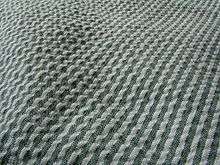
Seersucker is a thin, puckered, all-cotton fabric, commonly striped or chequered, used to make clothing for spring and summer wear. The word came into English from Persian, and originates from the words sheer and shakar, literally meaning "milk and sugar", probably from the resemblance of its smooth and rough stripes to the smooth texture of milk and the bumpy texture of sugar.[1] Seersucker is woven in such a way that some threads bunch together, giving the fabric a wrinkled appearance in places. This feature causes the fabric to be mostly held away from the skin when worn, facilitating heat dissipation and air circulation. It also means that pressing is not necessary.
Common items of clothing made from seersucker include suits, shorts, shirts, curtains, dresses, and robes. The most common colors for it are white and blue; however, it is produced in a wide variety of colors, usually alternating colored stripes and puckered white stripes slightly wider than pin stripes.
History
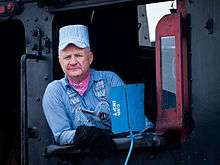
During the British colonial period, seersucker was a popular material in Britain's warm weather colonies like British India. When seersucker was first introduced in the United States, it was used for a broad array of clothing items. For suits, the material was considered a mainstay of the summer wardrobe of gentlemen, especially in the South, who favored the light fabric in the high heat and humidity of the summer, especially prior to the arrival of air conditioning.[2]
From the mid Victorian era until the early 20th century, seersucker was also known as bed ticking due to its widespread use in mattresses, pillow cases and nightshirts during the hot summers in the Southern US[3] and Britain's overseas colonies.[4] During the American Civil War, this cheap but durable material was used to make haversacks and even the famous baggy pants of Confederate Zouaves such as the Louisiana Tigers.[5]
In the days of the Old West, a type of heavyweight dark blue seersucker known as "hickory stripe" was used to make the overalls, work jackets and peaked caps of train engineers and railroad workers such as George "Stormy" Kromer or Casey Jones.[6] It was later worn by butchers[7] and employees of the gasoline companies, most notably Standard Oil.[8] This cotton fabric was durable like denim, cheap to produce, kept the wearer cool in the hot cab of the steam locomotive,[9] and obscured oil or coal tar stains. Even today, the uniforms of American Union Pacific[10] train drivers include "railroad stripe" caps based on those from the steam age, and some rolling stock used for freight, shunting and maintenance work is painted with blue and white "zebra stripes" to improve visibility.[11]
The fabric was originally worn by the poor in the U.S. until preppy undergraduate students began wearing it in the 1920s in an air of reverse snobbery.[12]
Seersucker is comfortable and easily washed and was the choice for the summer service uniforms of the first female United States Marines. The decision was made by Captain Anne A. Lentz, one of the first female officers selected to run the Marine Corps Women's Reserve during the Second World War.[13] From the 1940s onwards, nurses and US hospital volunteers also wore uniforms made from a type of red and white seersucker known as candy stripe.[14]
In modern fashion
.jpg)
During the 1950s, cheap railroad stripe overalls were worn by many young boys until they were old enough to wear jeans. This coincided with the popularity of train sets, and films such as The Great Locomotive Chase. At the same time, seersucker formal wear continued to be worn by many professional adults in the Southern and Southwestern US.[15] College professors were known to favor full suits with red bowties, although 1950s Ivy League and 21st century preppy[16] students usually restricted themselves to a single seersucker garment,[17] such as a blazer paired with khaki chino trousers.[18] Menswear brands famous for manufacturing seersucker at this time included Brooks Brothers, Macy's, Sears, and Joseph Haspel of New Orleans.[2][19]
In the 1970s, seersucker pants were popular among young urban African Americans seeking to connect to their rural heritage.[20] The fabric made a comeback among teenage girls in the 1990s, and again in the 2010s.[21]
Beginning in 1996, the US Senate held a Seersucker Thursday in June, where the participants dress in traditionally Southern clothing,[22] but the tradition was discontinued in June 2012. As of June 2014, it has been revived by members of the US Senate.[23] At the same time, however, some senators such as Ryan McKenna of Missouri have spoken against the wearing of seersucker due to its traditional use by small children.[24] The Republican Party has advised students at its Comms college not to wear seersucker when appearing before the cameras because of its old fashioned connotations,[2] plus the disruptive effect of the stripes.[25]
2010 to present
From 2012 onwards, seersucker blazers and pants made a comeback among American men[26] due to a resurgence of interest in preppy clothing[27] and the 1920s fashion showcased in The Great Gatsby. Although pale blue and dark blue stripes remained the most popular choice, alternative colors included green, red, black,[28] grey, beige, yellow, orange,[29] purple, pink, and brown.[30] The traditional two button blazer was updated with a slimmer cut and Edwardian inspired lapel piping,[31] and double breasted jackets became available during the mid 2010s.[32] Since 2010, "Seersucker Social" events have been held in major cities across the United States, where participants wear vintage clothes and ride vintage bicycles.[33] Such events are the summer equivalent of a Tweed Run, which is traditionally held in the fall.
In the 2016 Olympics hosted by Brazil, the Australian Olympic team received green and white seersucker blazers[34] and Toms shoes rather than the traditional dark green with gold trim.[35] At the same time, seersucker pants, skirts, espadrilles, blouses, and even bikinis were worn as casual attire by many fashion conscious young women in America.[36]
Weaving process
Seersucker is made by slack-tension weave. The threads are wound onto the two warp beams in groups of 10 to 16 for a narrow stripe. The stripes are always in the warp direction and ongrain. Today, seersucker is produced by a limited number of manufacturers. It is a low-profit, high-cost item because of its slow weaving speed.
Gallery
 Green/white checkered seersucker fabric.
Green/white checkered seersucker fabric.- Close up of green/white checkered seersucker, or "gingham", fabric showing the weave details.
- Shirt from green/white seersucker fabric.
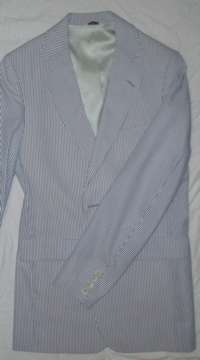 A blue and white seersucker jacket.
A blue and white seersucker jacket.- David Ferriero, speaking at Wikimania 2012, wearing a seersucker suit.
References
| Wikimedia Commons has media related to Seersucker. |
- ↑ "The American Heritage Dictionary entry: seersucker". The American Heritage Dictionary (Fourth ed.). Houghton Mifflin Harcourt Publishing Company.
- 1 2 3 Brett and Kate McKay (30 April 2015). "How to Wear a Seersucker Suit".
- ↑ Inc, Time (3 November 1947). "LIFE". Time Inc – via Google Books.
- ↑ "The Atlantic". Atlantic Monthly Company. 1 January 1866 – via Google Books.
- ↑ Troiani, Don; Coates, Earl J.; McAfee, Michael J. (1 January 2006). "Don Troiani's Civil War Zouaves, Chasseurs, Special Branches, and Officers". Stackpole Books – via Google Books.
- ↑ Russell, Tim. "Fill 'er Up!". Voyageur Press – via Google Books.
- ↑ All hail the man in the seersucker suit
- ↑ on, Best Books (1 January 1940). "Arizona, the Grand Canyon State: A State Guide /". Best Books on – via Google Books.
- ↑ Brett and Kate McKay (30 April 2015). "How to Wear a Seersucker Suit".
- ↑ Union Pacific museum
- ↑ Santa Fe Zebra Stripe
- ↑ David Colman (2006-04-20). "Summer Cool of a Different Stripe". The New York Times. Retrieved 2009-03-14.
- ↑ "The Army Nurse Corp". WW2 US Medical Research Centre. Retrieved 2009-03-14.
- ↑ Brayley, Martin (20 February 2012). "World War II Allied Nursing Services". Bloomsbury Publishing – via Google Books.
- ↑ Hunter, Cecilia Aros; Hunter, Leslie Gene (1 July 2000). "Texas A&M University Kingsville". Arcadia Publishing – via Google Books.
- ↑ "Suck It, Seersucker!". The Harvard Crimson.
- ↑ "The big problem with seersucker is that guys have been wearing it all wrong".
- ↑ "How to Wear Seersucker Properly If You Are Not Actually Southern". 23 June 2010.
- ↑ "Haspel family wants to make seersucker cool again, relaunches its iconic brand".
- ↑ Company, Johnson Publishing (1 September 1969). "Ebony". Johnson Publishing Company – via Google Books.
- ↑ Fashionista: Trendspotting
- ↑ "Stuffy Senate smiles at seersucker suits - Scripps Howard Foundation Wire". 22 June 2007.
- ↑ "Trent Lott Just Can't Resist a 'Seersucker Thursday'".
- ↑ Levin, Sam. "Sen. Ryan McKenna's Proposal: Ban Seersucker Suits in Missouri (Kids 8 and Under Exempt)".
- ↑ Reporter, Peter Hamby, CNN National Political. "Inside the GOP's secret school".
- ↑ "Top 10 Better Man".
- ↑ "Style".
- ↑ "When Can I Wear a Seersucker Suit?". 12 May 2014.
- ↑ Photos of 2016 seersucker suits
- ↑ Corsillo, Liza (11 June 2015). "How to Wear a Seersucker Suit, According to the Brand That Invented Them".
- ↑ "Style".
- ↑ Brooks Bros jacket
- ↑ "Parasols, picnics and pedaling: A dandy weekend for the Seersucker Social - WTOP". 11 June 2015.
- ↑ "Australia releases 'retro candy stripe' Rio Olympics uniform". 29 March 2016.
- ↑ "Sportscraft unveils 2016 Opening Ceremony uniform".
- ↑ Editor, Julee Wilson Senior Fashion; Post, The Huffington (21 May 2015). "How To Wear Seersucker Without Looking Like You're At A Country Club".
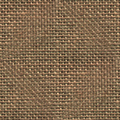
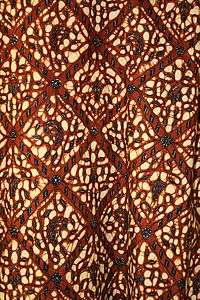
.svg.png)